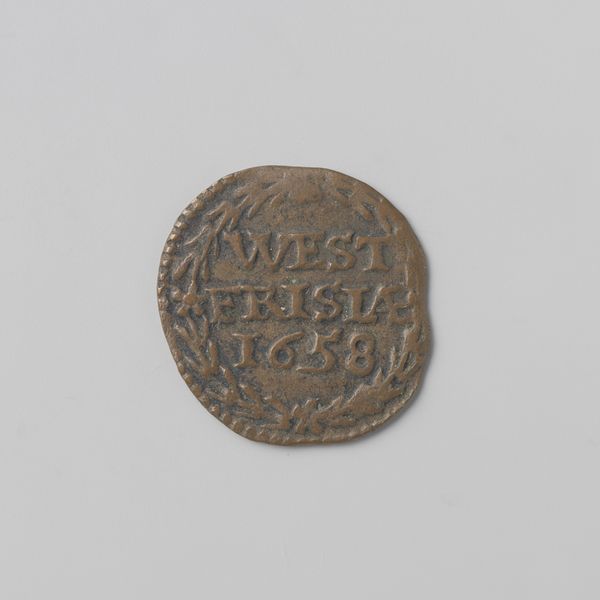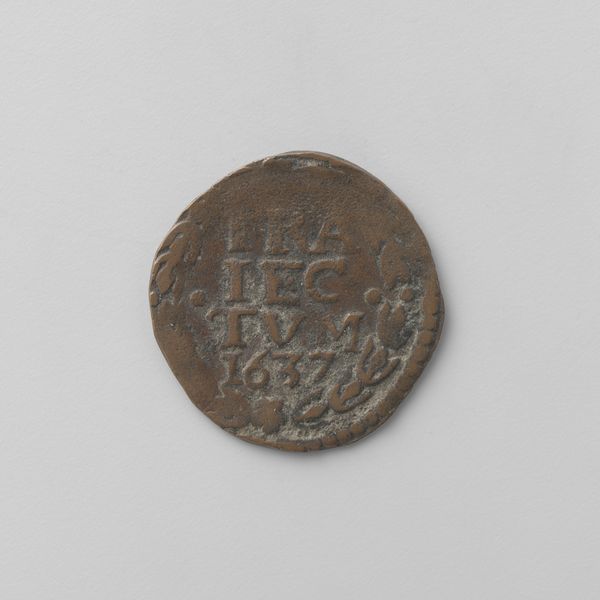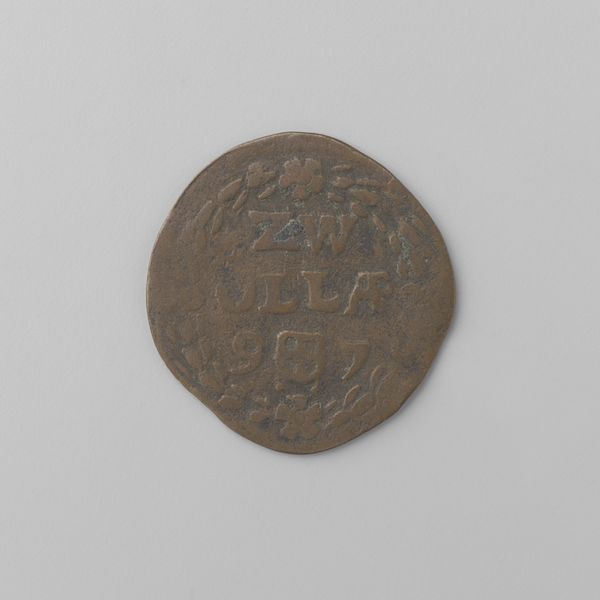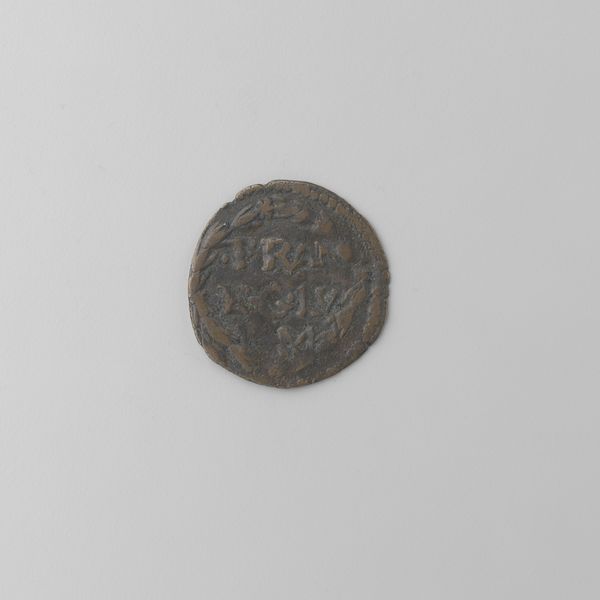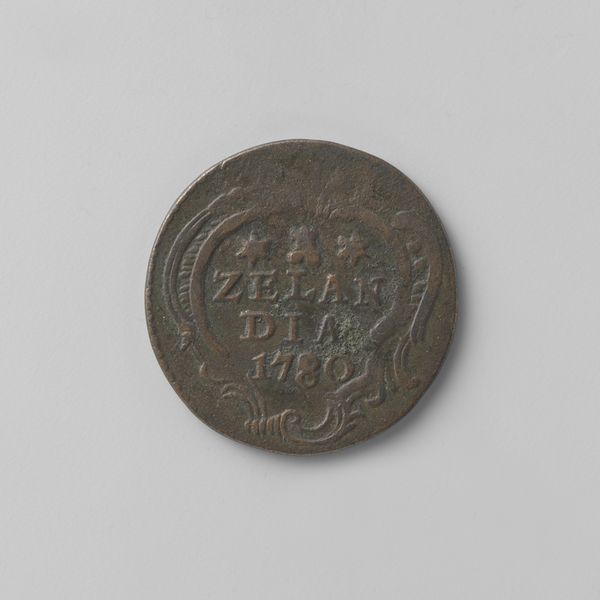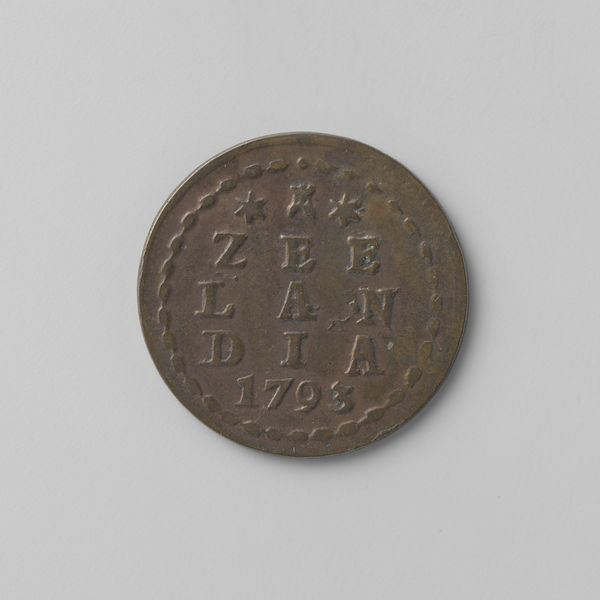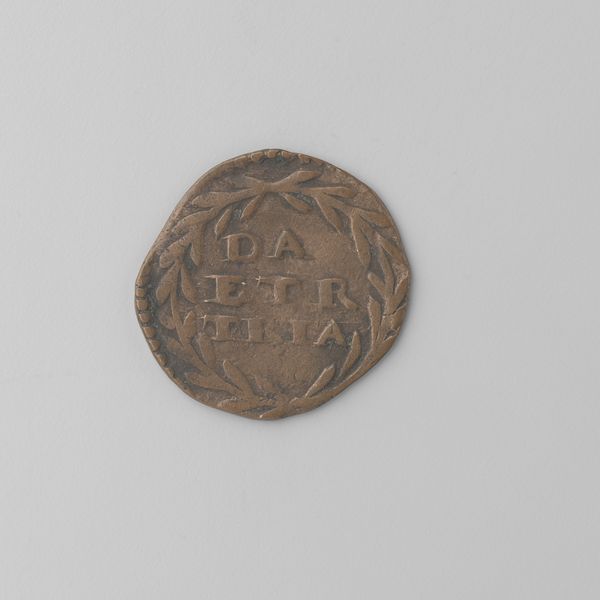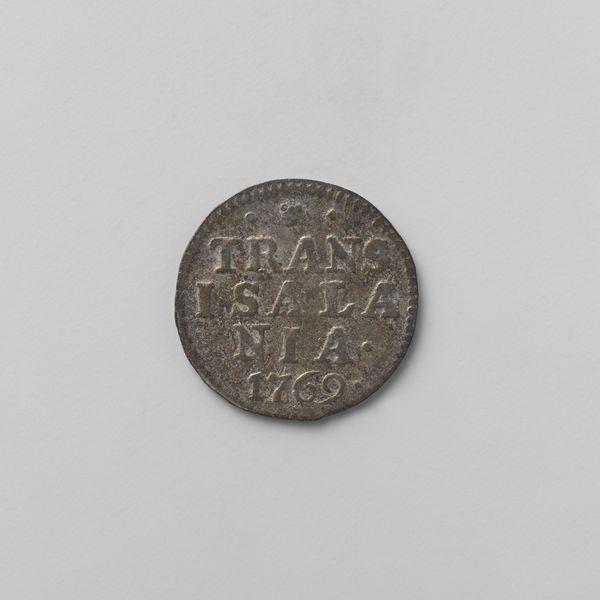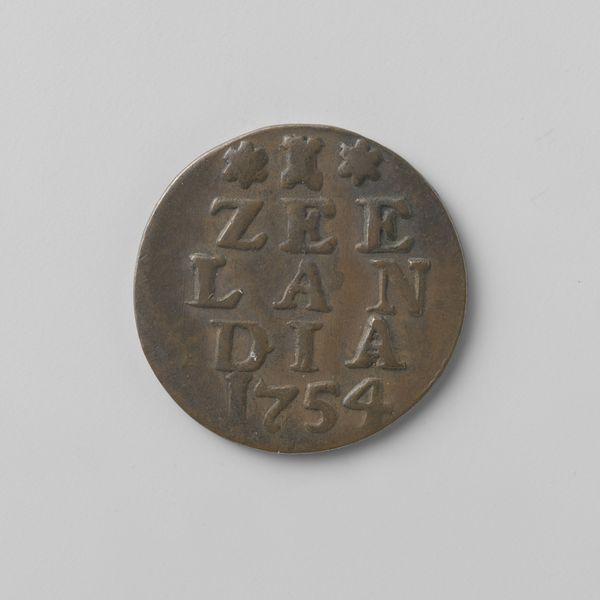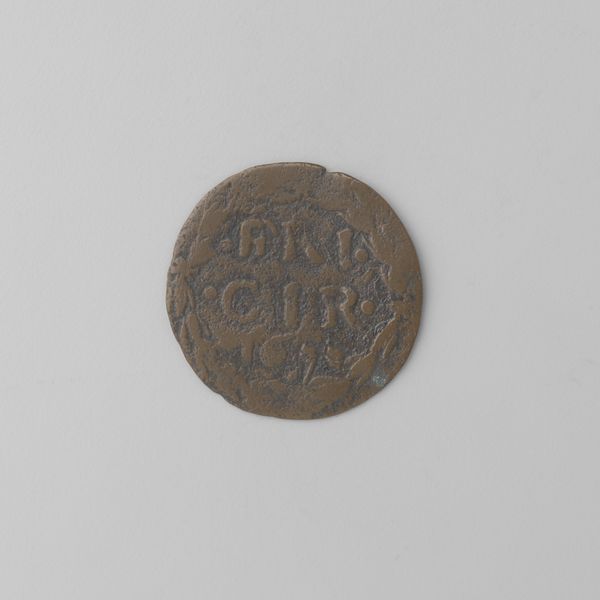
print, metal, relief, engraving
#
dutch-golden-age
# print
#
metal
#
relief
#
embossed
#
engraving
Dimensions: diameter 2.1 cm, weight 1.90 gr
Copyright: Rijks Museum: Open Domain
Curator: This is an Overijsselse duit from 1628. These small, low-value coins were quite common during the Dutch Golden Age. What’s your initial take on it? Editor: Well, it looks like it’s been through the wars! A bit wonky, like someone nibbled on it. It gives off this humble, almost melancholy vibe, doesn't it? Makes you wonder what hands it passed through. Curator: Indeed. As a form of currency authorized by the province of Overijssel, this coin wasn’t merely an object of exchange; it served as a tangible expression of regional identity and fiscal authority during the Dutch Republic’s formative period. Think of the symbolism embedded in this simple object. Editor: Right. Currency *always* reflects power. But back to that wonkiness… it adds a layer of authenticity for me, you know? It feels real, lived in. Perfect engravings are boring. Give me character any day. Does its value mirror its symbolism? Curator: Certainly, these duits held significance despite their minimal monetary value. Their circulation facilitated local trade and economic activities and, furthermore, these small coins helped knit together the socio-economic fabric of Overijssel. Editor: I love the relief. The texture almost brings history back. A miniature monument, constantly exchanged—how fantastic is that? The tiny details carry so much significance. Curator: Absolutely. Consider how Dutch Golden Age society emphasized trade. Money essentially lubricated these societal functions. Plus, these little coins would be disseminated far beyond Overijssel’s borders, so this provincial currency also acted as an emblem on the broader European stage. Editor: Fascinating stuff. Makes you see even mundane-seeming things through a totally new lens. Curator: That is the power of viewing history through its material culture. Each object holds narratives of social, economic, and political significance—and in this case it offers insights into identity itself.
Comments
No comments
Be the first to comment and join the conversation on the ultimate creative platform.
